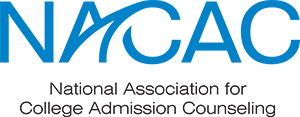If you're a high school senior who applied Early Action or Early Decision to a college, you may be admitted, denied, or deferred. A deferral is a college’s way of saying “maybe.” But what should a student do next?
Last updated: January 15, 2025
What is a Deferral?
Students who apply to college during Early Action or Early Decision can receive three responses from admissions offices: acceptance, rejection, or deferral. A deferral means they couldn’t say “yes” yet, but they weren’t ready to tell you “no” either. They want to review your first-semester senior year grades and accomplishments and evaluate you again in comparison to the regular decision applicant pool. You’re not in, but it’s not over yet, either.
At Collegewise, monitoring admissions trends is part of our daily routine (while sipping on our morning coffee). As we continue to hear back from colleges, students are being deferred more than any other generation.
This piece from Rick Clark at Georgia Tech speaks to the many (and often conflicting) institutional priorities at play for why someone is deferred (if you prefer audio, check out this podcast interview he did on the topic). Some places either admit or defer everyone (MIT, Georgetown). Some defer very few. No matter what, trying to play the guessing game over why you were deferred isn’t energy well spent. Ultimately, it means the door is still open to you. So, what do you do about it?
Why Was I Deferred?
If you were deferred, admissions officers found you to be a qualified candidate but may need more information about your application before making a final decision.
The important thing to remember is that there is never just one thing that leads colleges to their decision. It's not because a student didn't take a specific AP course, or they didn't include an additional extracurricular, or they had a spelling mistake in their Common App essay. So the last thing students should do right now is dwell on the unknown and beat themselves up.
At the end of the day, deferred applicants are qualified applicants.
Deferrals: Next Steps
We've broken this down into what to do right away, and what you can wait on. It’s tempting to immediately dive into “what do I do now?” And the honest answer is: the most impactful things you can do are best done weeks after the deferral. Here’s our recommendation.
Right After You've Been Deferred
Dos
The only immediate to do is to read the deferral letter carefully. Some colleges automatically place you in the Regular Decision pool, while others require you to fill out a form or click on a link to do so. Make sure to fill out the form or click a link if the college is asking you to opt in, and if you’d like to remain in the regular pool. Some schools will also ask if you’d like to be considered or shift into the Early Decision II pool; make sure to discuss with your family and school counselor if this option makes sense for you.
Don'ts
For the love of all things, please, oh please, don’t bother the admissions office the day after you were deferred. And frankly, if you were deferred at any point in the month of December, don’t bother them until the new year. Reaching out so closely to receiving your decision oftentimes in a more emotional response. Waiting lets you demonstrate that you thought through your outreach.
Otherwise, it’s important to stay focused (and excited!) about the other colleges you’ve applied to, or maybe even been admitted to. Don’t let this “maybe” distract you from the “yes” offers you do have, or the work that remains.
In Late-January
Dos
At this point, you’ll want to make sure you’ve updated your high school counselor that you’ve been deferred, so they know to send an updated transcript (called a Mid-Year Report) to the college. This is how the admissions office will see your academic progress.
You’ll also want to let the college know about any important updates to your application since you submitted it. Some schools have specific instructions about how they want to be updated and with what information. Make sure you follow their guidelines and requirements here. For some, there’s a dedicated place to share updates in the applicant portal. Either way, we still recommend writing an additional email to your admission officer (or the admission office’s general email, if you can’t track down your AO’s contact information).
Be thoughtful about what to share. Remember that colleges will still have your application on file, so they’ll have everything that you submitted the first time. There are a few pieces, though, that will be new information that colleges will want to consider:
- Grades. Once your first semester/second trimester/quarter grades are available, you’ll want to share those. Your counselor will handle sharing the actual transcript, but if there’s any grade or progress you’re particularly proud of, that’s worth sharing in the email.
- Test scores. If you retook the SAT or ACT and scores have improved since you submitted your application, you’ll want to update those as well.
- New, important information about activities and/or involvements. For example, if you were recently elected captain of the basketball team or if your research paper was accepted for publication, those are things that you may want to include.
- Level of interest. At this phase in the process, it’s incredibly helpful to hear an (honest!) show of interest. If this is truly your top choice school, say that. And, make sure you tell that to your school counselor as well.
- Unless a college explicitly asks for one, don’t send additional letters of recommendation or essays. If they want to read extra writing, they will ask for it.
Don'ts
Don't give up and lose faith in the college admissions process. This is an exciting time for students and it shouldn't take away from other college acceptances.
How to Email an Admissions Officer for an Update
Here’s a sample email for you to draw inspiration from. Of course, make sure to write it in
your own voice and style. Letting them see you as an individual here is important!
Hello, Mr. Ross –
My name is Gillian Cummings and I’m writing to follow up on my application to Santa Clara.
While I was disappointed to be deferred during Early Action, I’m still very excited about the
possibility of attending this fall.
I’ve requested that my counselor send in my Mid Year Report, which she did last week. In
addition, I have a few updates to share:
- I switched from AP Biology to AP Environmental Science. Our Biology class didn’t meet the
minimum enrollment it needed to run this semester, so I enrolled in APES instead. - I am really proud of the B I earned in my AP Economics class. The course is fast-paced and the material is unlike anything I’ve encountered thus far in my high school curriculum, but I find the real-world applications of what we are learning fascinating.
- My basketball team made it to districts! We’ve been building our team over the last four
years, so it was pretty exciting to make it that far.
I appreciate your careful consideration of my application to Santa Clara. If there is any other
information you need, please don’t hesitate to email me at gcummings@gmail.com or call me at
425-451-4355. Santa Clara is my top choice for college, and there’s no other place I’d rather be
next fall.
Gillian Cummings
Applicant ID: 8161999
(*If you don’t have an applicant ID, list your birthdate.*
Do Deferred Applicants Get Accepted in the End?
Yes, deferred applicants get accepted each year. While not every deferred student will receive an acceptance, students who demonstrated interest, provided supplemental information, and made improvements during their waiting period can increase their chances of acceptance.
Final Thoughts
Whether you or someone you know has been deferred, don't panic. As we've mentioned in this blog, the door is still open. Be sure to keep up the hard work you've been doing in your classes, finish the academic year on a strong foot, and apply some of the strategies we've listed. Good luck, applicants!
About Us: With more than twenty five years of experience, Collegewise counselors and tutors are at the forefront of the ever-evolving admissions landscape. Our work has always centered on you: the student. And just like we’ve always done, we look for ways for you to be your best self - whether it’s in the classroom, in your applications or in the right-fit college environment. Our range of tools include counseling, test prep and academic tutoring, and essay management and more, leading to a 4x higher than average admissions rates.
Sign up for a free webinar or check out one of our many free resources. If your family might find working with one of our Collegewise experts helpful, we offer a free 45-min consultation to determine how we can best help you reach your academic goals.






